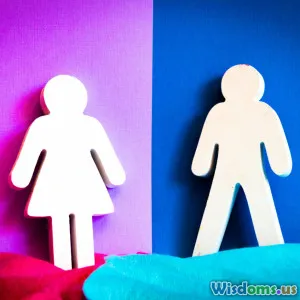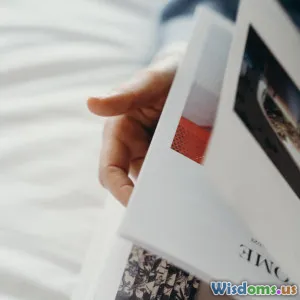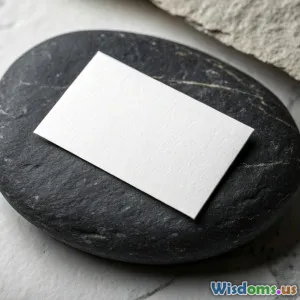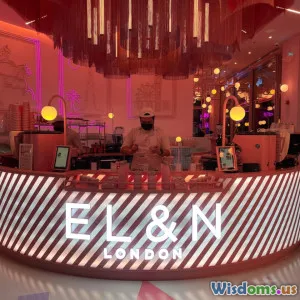
Flat vs Skeuomorphic Design Which Style Works Better Today
9 min read Explore the evolution and impact of flat vs skeuomorphic design in modern graphic creativity. (0 Reviews)
Flat vs Skeuomorphic Design: Which Style Works Better Today?
In the ever-evolving world of graphic design, visual aesthetics not only catch the eye but shape the very usability and emotional connection users have with digital products. Among the most debated design philosophies today is the tussle between flat design and skeuomorphic design. But which design style truly works better in the current digital era? To undress this question, we must chart their origins, effectiveness, and lasting appeal.
Understanding the Core Concepts
What Is Flat Design?
Flat design is a stylistic approach characterized by minimalism, clean lines, and the absence of three-dimensional effects such as drop shadows, gradients, and textures. Born out of a desire for clarity and functionality, flat design emphasizes usability and fast load times, with the most iconic use found in Microsoft's Metro UI introduced in 2010 and further popularized by Apple's iOS 7 redesign in 2013.
The Essence of Skeuomorphic Design
Skeuomorphic design, in contrast, embeds digital interfaces with ornamental textures, shadows, and details that mimic physical objects. This method helps bridge the gap between real and digital worlds, providing users with familiar visual cues. Early iOS versions employed heavy skeuomorphic elements — for instance, the Notes app resembling a yellow notepad or the calendar app looking like a wooden desk calendar.
Historical Context and Evolution
Early digital design arguably leaned toward skeuomorphism to assist users transitioning from real-world to virtual environments. The familiarity of objects helped users intuitively understand functions.
However, with the proliferation of mobile devices and the demand for speed and scalability, flat design gained momentum. Its simplicity allowed for rapid loading, easier scalability across screen sizes, and a timeless look that aligned with modern minimalistic tastes.
Strengths and Weaknesses of Both Designs
Flat Design Advantages:
- Performance-Oriented: Simplified visuals require fewer resources leading to faster page loads, critical for mobile UX.
- Modern and Minimal: Flat design often appeals for its sleek look that avoids clutter.
- Responsive Friendly: Scales seamlessly across different devices and resolutions.
Limitations of Flat Design:
- Usability Challenges: The extreme simplicity sometimes sacrifices helpful affordances, making buttons or interactive elements less distinguishable.
- Monotonous Aesthetic: Overzero emphasis on simplicity can lead to mundanity and lack of unique branding.
Skeuomorphic Design Advantages:
- User Familiarity: By mimicking real-world objects, the design creates an intuitive user experience.
- Rich Visual Engagement: Textures and shadows add visual interest and depth.
- Emotional Connection: Provides personality and can delight users via ornamental details.
Skeuomorphic Design Drawbacks:
- Outdated Perception: Can feel heavy or cluttered in contemporary designs.
- Performance Issues: Detailed graphics may slow down loading, especially on low-end devices.
- Scalability Concerns: Intricately rendered assets might not scale well across device sizes.
Real-World Examples and Case Studies
Apple's Design Journey
Apple famously used skeuomorphic design extensively in early iOS iterations — the bookshelf in iBooks or the felt table in Game Center created a tangible interface. Yet, with iOS 7, Apple pivoted sharply towards flat design — cleaner icons, less ornamentation, and a bright color palette. This shift wasn’t merely aesthetic; it reflected a philosophy prioritizing clarity, speed, and a new era of digital interaction.
Microsoft Metro UI
The Metro design language emphasized flat elements combined with bold typography and vibrant colors. It revolutionized Windows interfaces by discarding skeuomorphic surfaces in favor of a usability-first approach, influencing many other platforms.
Mixed Approaches: The New Neumorphism Trend
Recently, designers have sought to blend the two extremes with "neumorphism," where soft shadows create a subtle 3D effect while retaining flat design simplicity. Though still evolving, this trend underscores the design community’s quest for balance.
Which Style Works Better Today?
Context is King
The choice between flat and skeuomorphic design hinges on the product context, user base, and project goals.
- Functional Interfaces: Apps demanding speed and clarity — dashboards, productivity tools — often benefit more from flat design.
- Brand Experience: Products aiming for nostalgia or a personal touch, such as fitness apps or e-readers, may leverage skeuomorphism to enrich emotional connections.
Accessibility and User Experience
Flat design's minimalism can sometimes impair accessibility, especially for users with visual impairments due to lack of depth and shadows signaling clickable elements. Here, skeuomorphic touches or hybrid designs add necessary intuitiveness.
Trends and User Preferences
Data from sites like Statista show increasing mobile internet usage and decreased patience for slow interfaces, favoring flat design. However, Nielsen Norman Group stresses that purely flat design risks "dead-ends" due to ambiguous elements.
Thus, modern design increasingly adopts "flat 2.0" or "semi-flat" styles — clean yet practical, with tactile feedback elements enhancing usability without clutter.
Expert Insights
Jakob Nielsen, a leading usability expert, states: "Design must marry functionality and aesthetics; neither can succeed alone. Users need clear, visually appealing cues to interact effortlessly."
Similarly, Luke Wroblewski, a renowned UX designer, argues, "Flat design needs to evolve to provide more intuitive affordances without losing its elegance. Getting the balance right is the challenge of today’s designers."
Conclusion
Both flat and skeuomorphic designs hold unique strengths, rooted in their philosophies and historical applications. Today’s digital landscape doesn’t demand a strict allegiance to either but rather a nuanced blend tailored to user needs and brand voice.
Designers should evaluate:
- The platform and device context,
- The target audience’s familiarity and accessibility needs,
- Performance requirements,
- And emotional goals of the interface.
In embracing hybrid design strategies, creatives open the door to innovative interfaces that are both aesthetically compelling and supremely functional. The future of digital design, much like today, thrives on this dynamic equilibrium, proving that neither flat nor skeuomorphic reigns supreme but coexists in harmony to serve users best.
Ready to rethink your design approach? Whether adopting the clarity of flat design or the warmth of skeuomorphism, informed choices can elevate user experiences and set your projects apart in the crowded digital arena.
References
- Apple iOS design history – Apple Human Interface Guidelines
- Microsoft Metro UI overview – Microsoft Docs
- Nielsen Norman Group research on usability and flat design
- Statista data on mobile use and design preferences
- Wroblewski, L. "Mobile First" (Book)
Rate the Post
User Reviews
Popular Posts





















